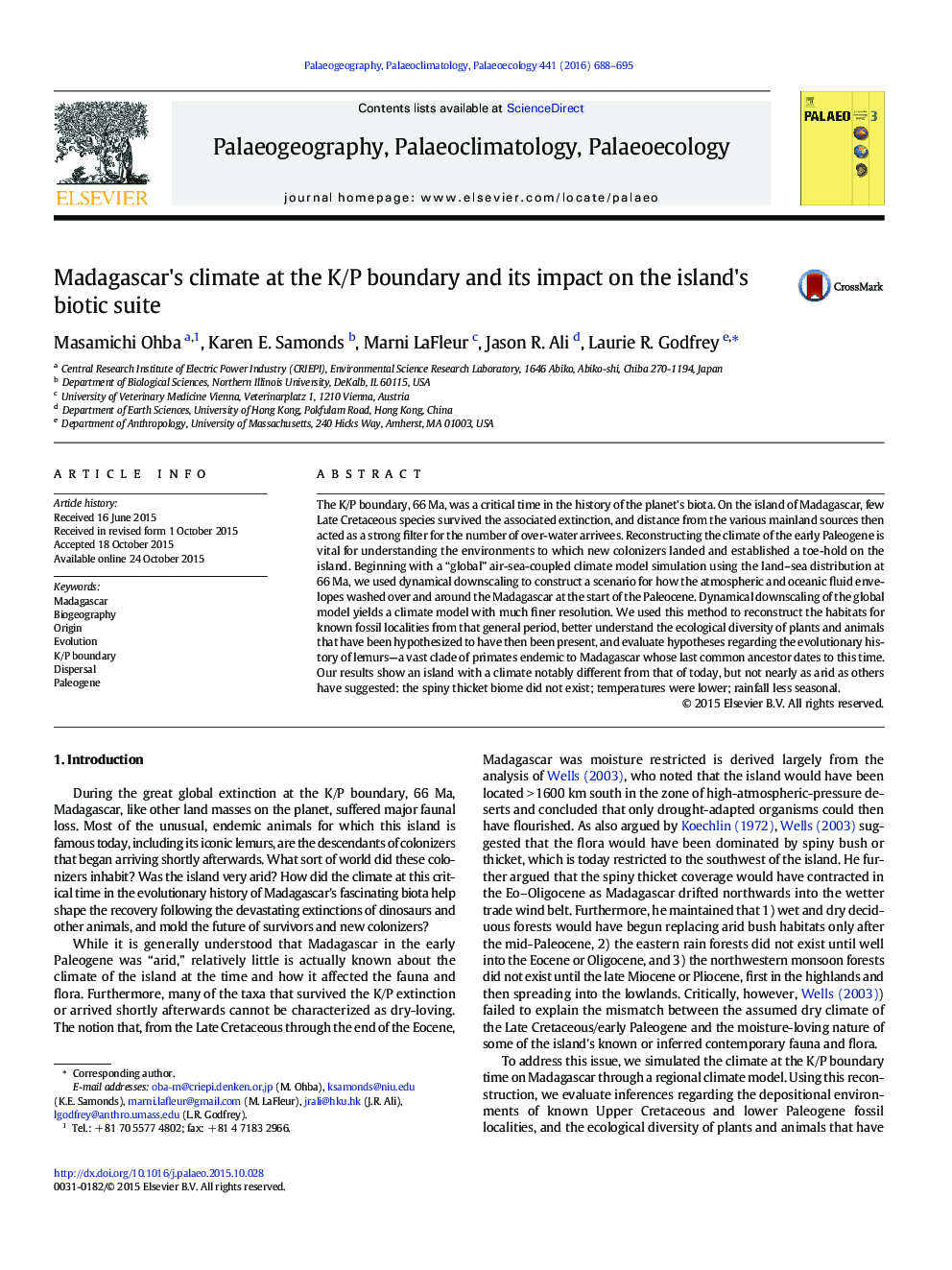| Article ID | Journal | Published Year | Pages | File Type |
|---|---|---|---|---|
| 6349311 | Palaeogeography, Palaeoclimatology, Palaeoecology | 2016 | 8 Pages |
Abstract
The K/P boundary, 66Â Ma, was a critical time in the history of the planet's biota. On the island of Madagascar, few Late Cretaceous species survived the associated extinction, and distance from the various mainland sources then acted as a strong filter for the number of over-water arrivees. Reconstructing the climate of the early Paleogene is vital for understanding the environments to which new colonizers landed and established a toe-hold on the island. Beginning with a “global” air-sea-coupled climate model simulation using the land-sea distribution at 66Â Ma, we used dynamical downscaling to construct a scenario for how the atmospheric and oceanic fluid envelopes washed over and around the Madagascar at the start of the Paleocene. Dynamical downscaling of the global model yields a climate model with much finer resolution. We used this method to reconstruct the habitats for known fossil localities from that general period, better understand the ecological diversity of plants and animals that have been hypothesized to have then been present, and evaluate hypotheses regarding the evolutionary history of lemurs-a vast clade of primates endemic to Madagascar whose last common ancestor dates to this time. Our results show an island with a climate notably different from that of today, but not nearly as arid as others have suggested: the spiny thicket biome did not exist; temperatures were lower; rainfall less seasonal.
Related Topics
Physical Sciences and Engineering
Earth and Planetary Sciences
Earth-Surface Processes
Authors
Masamichi Ohba, Karen E. Samonds, Marni LaFleur, Jason R. Ali, Laurie R. Godfrey,
